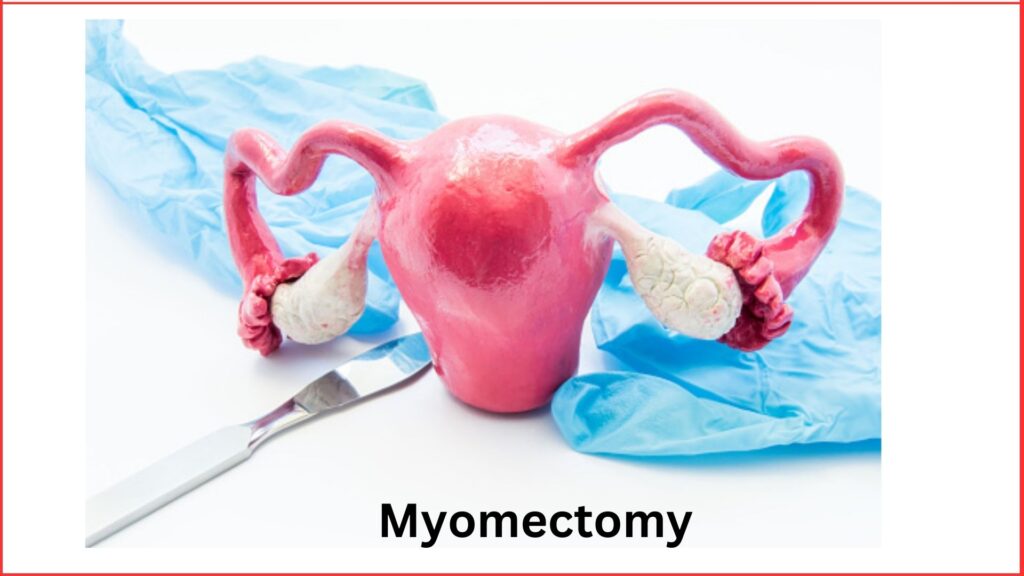myomectomy : definition, indications & complication
Myomectomy
We have described in article :
Definition of myomectomy
Indications of myomectomy
Counselling of a patient before myomectomy
prerequisites that should be fulfilled before myomectomy
Complications of myomectomy

Definition of myomectomy :
Myomectomy : Myomectomy is the enucleation of myomata from the uterus leaving behind a potentially functioning organ capable of future reproduction.
Indications of myomectomy:
- Persistent uterine bleeding despite medical therapy.
- Excessive pain or pressure symptoms.
- Size >2 weeks, woman desirous to have a baby
- Unexplained infertility with distortion of the uterine cavity.
- Recurrent pregnancy wastage due to fibroid.
- Rapidly growing myoma during follow-up.
- Subserous pedunculated fibroid.
Counseling of a patient before myomectomy :
- About the disease & its fate
- Proposed treatment : Myomectomy
- Available treatment options.
- Complications if not treated
- Complications of the treatment :
- Risk of recurrence & persistence of fibroid is about 30-50%
- Risk of persistence of menorrhagia is about 1-5%
- Risk of relaparotomy is about 20-25%
6. Prognosis of the treatment :
- Pregnancy rate following myomectomy is about 40-60%.
- Pregnancy following myomectomy should have a mandatory hospital delivery, although the chance of scar rupture is rare (little more when the cavity is open).
7. Post-operative follow-up.
8. Informed written consent.
Prerequisites that should be fulfilled before myomectomy :
- Hysteroscopy or hysterosalpingography : To exclude any submucous fibroid or a polyp or any tubal block.
- Hysteroscopy endometrial biopsy : In cases of irregular cycles, not only to remove a polyp but also to exclude endometrial carcinoma.
- Examination of the husband from fertility point of view (semen analysis).
Complications of myomectomy :
Immediate :
- Haemorrhage.
- Injury to the bladder and the ureter when dealing with cervical or broad ligament fibroids.
- Injury to the fallopian tubes-interstitial portion is commonly damaged during incision & suturing.
- Injury to bowel.
- Febrile morbidity due to tissue reaction or infection.
Remote :
- Abdominal distension scar.
- Adhesion of the small bowel to the scar.
- Persistent menorrhagia because menorrhagia may be due to causes other than the fibroid or Ix an intra-uterine polyp or leiomyoma was overlooked at operation.
- Recurrence of fibroid.
- Risk of re-laparotomy
- Endometriosis
- Rupture of the scar in subsequent pregnancy.

I¦ve been exploring for a bit for any high-quality articles or weblog posts in this sort of house . Exploring in Yahoo I finally stumbled upon this site. Reading this information So i¦m happy to exhibit that I have an incredibly excellent uncanny feeling I discovered exactly what I needed. I so much certainly will make sure to do not disregard this web site and provides it a look regularly.